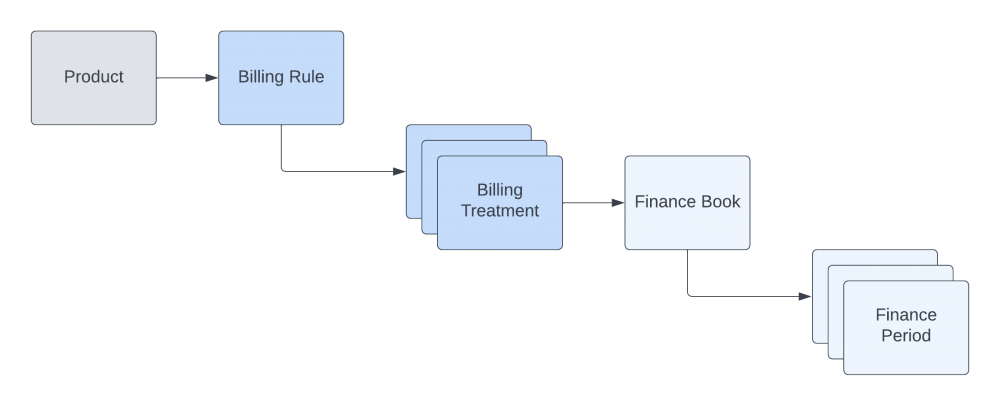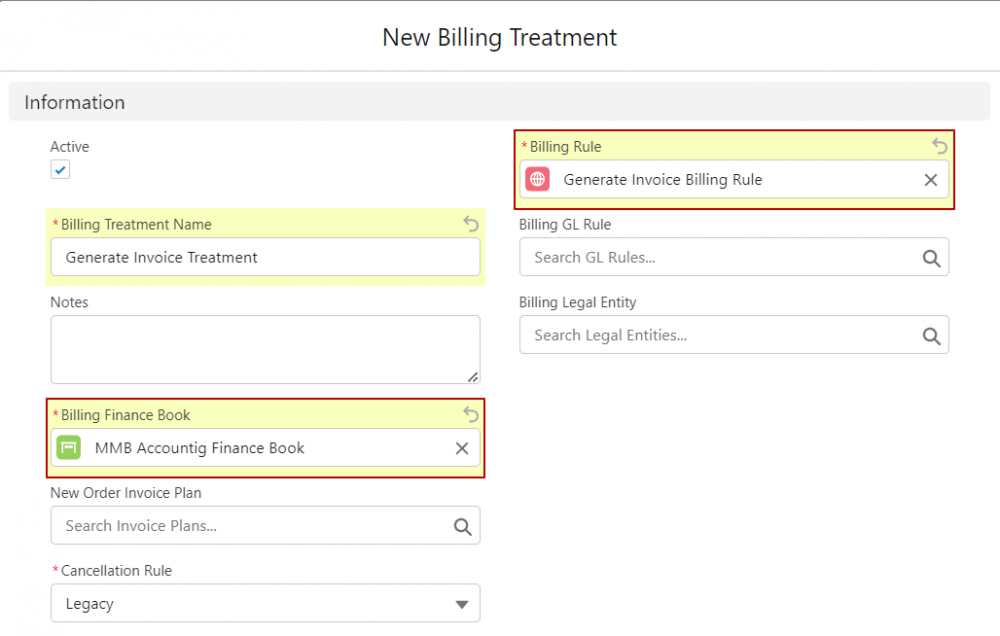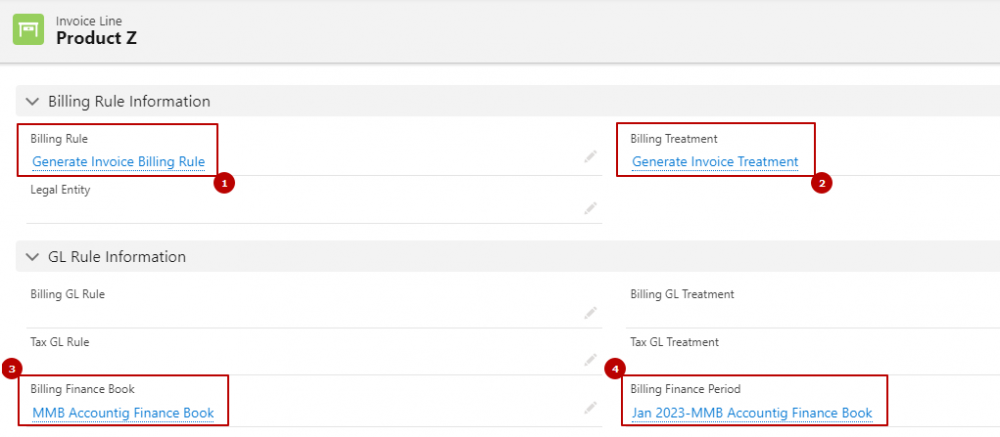
8
FebTransactional records such as invoice lines, credit note allocations, debit note allocations, payment allocations, and revenue transaction records all have lookups to finance period records. This means that once these records are generated, they can be linked to the correct finance period.
Manual association of transactional records with finance books and finance periods can be achieved by populating lookup fields. However, Salesforce Billing offers an automated solution through the use of Billing Rules and Billing Treatments. The Billing Treatment object acts as a bridge between a Billing Rule record and a Finance Book record, each referencing a lookup field on the Billing Treatment.

Every product in Salesforce Billing should have a Billing Rule, as it is required for order and invoice generation. The relationship between the Billing Treatment, Billing Rule, and invoice line is established through the product lookup field. When an invoice line is created, Salesforce Billing uses the appropriate Billing Treatment, which determines the finance book and finance period to associate it with based on the respective dates.

Similarly, the product lookup is crucial for credit note and debit note allocations as it links them to the appropriate billing rule, thus allowing the appropriate record-keeping functionalities. With the correct billing rule and billing treatment set up, Salesforce Billing can allocate any generated records, including order product, invoice line, credit note allocation, and debit allocation to the correct finance period.

In conclusion, Salesforce Billing offers an efficient and automated solution for associating transactional records with finance books and finance periods. By utilizing the Billing Rules and Billing Treatments, it can ensure that all records are accurately linked and recorded.
Comments (0)